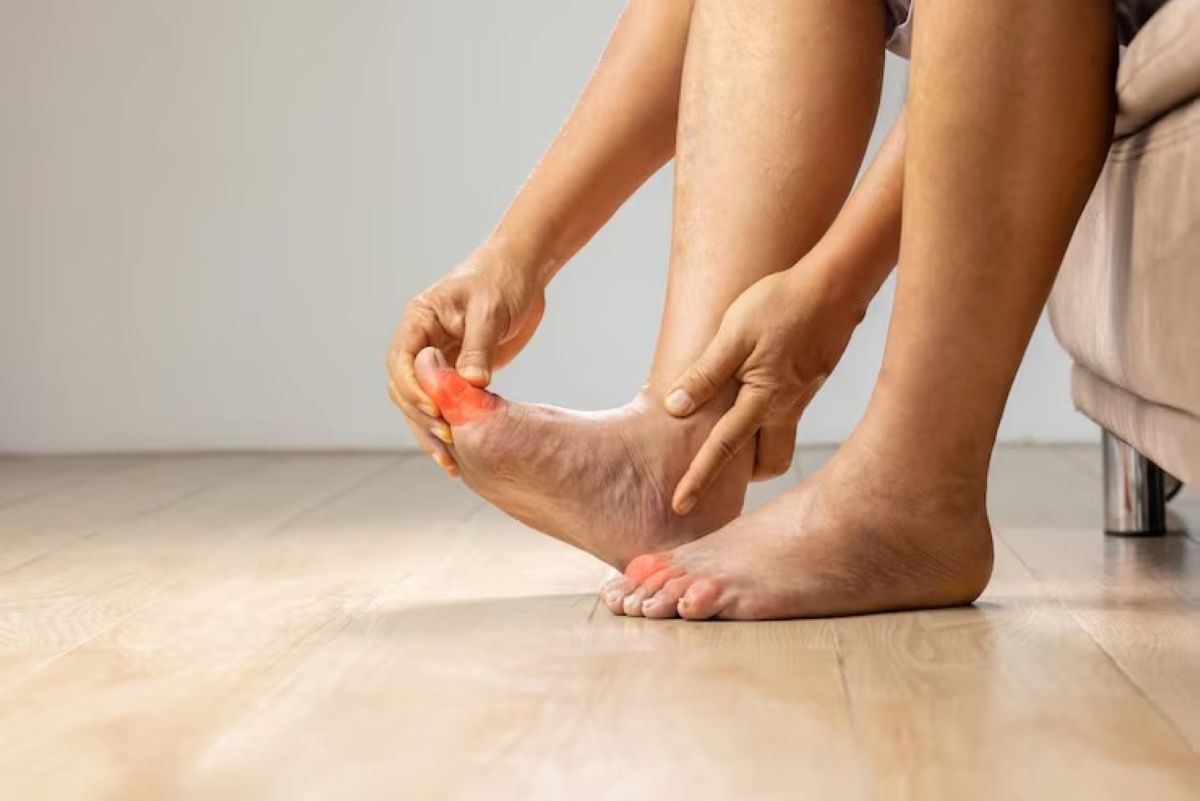
Millions of people worldwide suffer from diabetes, a chronic illness that, if left untreated, can lead to a variety of consequences. Foot care is one of the most neglected but important parts of managing diabetes. Due to decreased immunity, poor circulation, and nerve loss (neuropathy), people with diabetes are more likely to experience foot issues. Ignoring foot health can result in serious infections, ulceration, and in severe cases, amputation. This blog will discuss the importance of foot care for diabetics, typical diabetic foot issues, treatment choices, and preventative actions.
Although diabetes has a variety of effects on the body, excessive blood sugar levels can particularly harm the blood vessels and nerves in the foot. This raises two main issues:
When combined, these disorders put the feet at risk for issues that could seriously affect their general health and mobility. According to studies, up to 25% of diabetes patients may get foot ulcers at some point in their lives, underscoring the significance of preventative foot care.
People with diabetes are more likely to have a number of foot problems, such as:
Numbness, tingling, or burning feelings in the feet are symptoms of neuropathy. Patients could not be aware of their injuries, which could result in untreated wounds that could get infected.
Open sores called ulcers usually appear on the soles of the feet. If left untreated, they can take weeks or months to heal and frequently appear in pressure sites like the balls of the feet or the heels.
An ideal environment for fungal development is produced by elevated blood sugar levels. Athlete's foot and nail fungus are examples of common fungal illnesses.
Pressure or friction can cause skin to thicken. Despite their apparent innocuousness, they can degrade and cause ulcers in diabetics.
Charcot foot is a serious condition that weakens the foot's bones and frequently results in deformities. To avoid irreversible harm, early detection and treatment are essential.
In diabetes individuals, even small ingrown nails can cause infections that spread quickly.
Daily examination, cleanliness, and preventative measures are all part of proper foot care. Here are some crucial pointers:
Examine the skin for any wounds, blisters, redness, swelling, or color changes. If necessary, using a mirror to see your foot soles can be helpful.
Every day, wash your feet with lukewarm water and light soap. Hot water can burn sensitive skin, so stay away from it. Make sure your feet are completely dry, especially in between the toes.
Use a moisturizer to keep your skin from getting dry and cracked, but stay away from the spaces between your toes since too much moisture might encourage the growth of fungi.
To avoid ingrown nails, cut your toenails straight across. For routine nail care, a podiatrist can assist if vision or dexterity are problems.
Select footwear that minimizes pressure points, offers support, and fits properly. Even indoors, avoid going barefoot to avoid getting hurt.
Never try to cure ulcers, calluses, or corns at home. Seek expert medical attention at all times.
Maintaining blood sugar levels within the advised range indirectly safeguards foot health by lowering the risk of infections and neuropathy.
Regular visits to a healthcare provider are essential, even with careful daily care:
Getting medical help right away is essential to avoiding serious problems. Patients should get help right away if they observe:
Amputation risk can be reduced and infections can be stopped from getting worse with early management.
In addition to cleanliness and examinations, the following preventive measures can help to further safeguard the feet:
In order to manage diabetic foot issues and avoid major consequences, prompt treatment is essential. Care may include medication, wound care, or surgery, depending on how severe the problem is. Early intervention preserves mobility, prevents infection, and aids in the healing process.
Antibiotics, debridement (the removal of dead tissue), pressure unloading using special footwear, and wound washing are some possible treatment options.
Depending on the severity, antifungal drugs are frequently administered as topical or oral treatments.
Physical therapy, medications, and appropriate footwear all aid in symptom management and injury prevention.
Surgery may be required to remove infected tissue or rectify abnormalities in severe situations, such as deep infections or Charcot foot.
For diabetics, neglecting foot care can have major repercussions, such as:
Patients can greatly lower these risks and keep their feet healthy and functional by adopting preventive measures.
Related: Understanding Diabetic Neuropathy: Symptoms and Prevention
An important but frequently disregarded aspect of managing diabetes is foot care. Diabetes patients can improve their general quality of life, increase their mobility, and avoid major complications with regular inspections, good hygiene, and professional checkups. Patients can safeguard their feet and steer clear of avoidable medical emergencies by remaining watchful and proactive.
Dr L H Hiranandani Hospital provides specialist services such as diabetic foot clinics in Mumbai, podiatrist care, and individualized treatment plans to guarantee your feet stay safe and healthy for people seeking comprehensive foot care and diabetes management. Making foot health a priority now can help avoid major issues later.